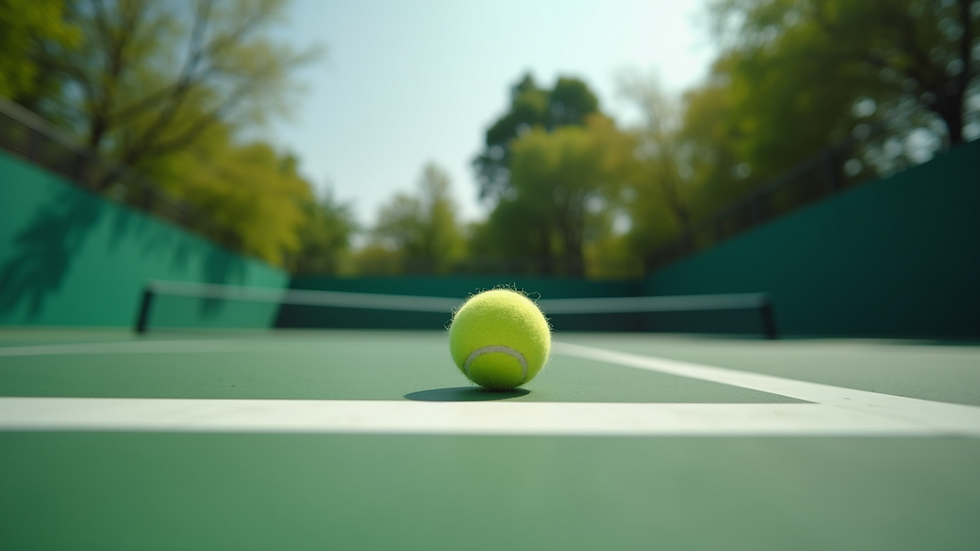Creating an Effective Tennis Training Plan
- Shai Gigi
- Aug 8
- 4 min read
Developing a solid tennis training plan is essential for players who want to improve their skills, increase their fitness, and perform better on the court. Whether you are a beginner or an advanced player, a well-structured plan helps you stay focused and track your progress. This guide will walk you through the key components of creating an effective tennis training plan that suits your goals and lifestyle.
Understanding the Basics of Tennis Training
Before diving into the specifics of your training plan, it is important to understand what tennis training involves. Tennis is a sport that requires a combination of physical fitness, technical skills, mental toughness, and strategic thinking. Your training should address all these areas to ensure balanced development.
Physical fitness includes endurance, strength, agility, and flexibility. Technical skills cover strokes such as forehand, backhand, serve, and volley. Mental toughness involves concentration, confidence, and handling pressure. Strategy focuses on shot selection, positioning, and adapting to opponents.
A comprehensive tennis training plan will include drills and exercises targeting each of these components. For example, you might spend time practicing serves and groundstrokes, doing footwork drills, working on your stamina with cardio exercises, and reviewing match tactics.

Building Your Tennis Training Routine
Creating a tennis training routine requires careful planning to balance practice, fitness, and rest. Here are some practical steps to help you build an effective routine:
Set Clear Goals
Define what you want to achieve. Are you aiming to improve your serve, increase your endurance, or prepare for a tournament? Clear goals will guide your training focus.
Schedule Training Sessions
Decide how many days per week you can commit to training. Consistency is key, so aim for at least 3-4 sessions weekly. Include a mix of on-court practice and off-court fitness work.
Warm-Up and Cool-Down
Always start with a warm-up to prepare your muscles and reduce injury risk. End with a cool-down to aid recovery.
Incorporate Variety
Mix technical drills, match play, fitness training, and mental exercises. This variety keeps training interesting and well-rounded.
Track Your Progress
Keep a training journal or use an app to record what you do each session and note improvements or challenges.
For those looking for structured programs, joining a tennis camp or clinic can provide expert guidance and a ready-made tennis training schedule. For example, this tennis training schedule offers a great way to stay organized and motivated.

How Many Hours Do Tennis Players Train a Day?
The amount of time tennis players train daily varies depending on their level, goals, and schedule. Professional players often train between 4 to 6 hours a day, combining on-court practice, fitness training, and recovery sessions. For amateur or recreational players, 1 to 2 hours per day is usually sufficient to see steady improvement.
Here is a typical breakdown for a serious tennis player’s daily training:
On-court practice: 2-3 hours focusing on technique, drills, and match play.
Fitness training: 1-2 hours including strength, agility, and endurance exercises.
Mental training and recovery: 30 minutes to 1 hour for visualization, stretching, and rest.
It is important to listen to your body and avoid overtraining. Quality matters more than quantity, so focus on purposeful practice rather than just clocking hours.

Essential Components of a Tennis Training Plan
To create a balanced tennis training plan, include these essential components:
Technical Skills Training
Practice all strokes: forehand, backhand, serve, volley, and overhead.
Use drills that simulate match situations.
Work on footwork and positioning.
Physical Conditioning
Cardiovascular exercises like running, cycling, or swimming to build endurance.
Strength training focusing on legs, core, and upper body.
Agility drills such as ladder exercises and cone drills.
Flexibility routines including dynamic and static stretching.
Mental Training
Visualization techniques to prepare for matches.
Breathing exercises to manage stress.
Goal setting and positive self-talk.
Tactical Training
Study opponents and develop game plans.
Practice shot selection and court positioning.
Play practice matches to apply strategies.
Recovery and Nutrition
Prioritize rest days to allow muscles to recover.
Maintain a balanced diet rich in protein, carbohydrates, and hydration.
Use techniques like foam rolling and massage to reduce soreness.
Tips for Staying Motivated and Consistent
Sticking to a tennis training plan can be challenging, but these tips can help you stay on track:
Set short-term and long-term goals to keep your focus sharp.
Celebrate small victories like improved serve speed or better footwork.
Train with a partner or coach to increase accountability.
Mix up your routine to avoid boredom.
Listen to your body and adjust intensity to prevent burnout.
Use technology such as video analysis to track and improve your technique.
By following these guidelines, you can build a tennis training plan that not only improves your game but also keeps you motivated and injury-free.
Creating an effective tennis training plan is a dynamic process that requires attention to detail and commitment. By focusing on technical skills, physical conditioning, mental toughness, and tactical awareness, you can elevate your performance on the court. Remember to balance training with rest and nutrition, and use resources like structured tennis camps to enhance your progress. With dedication and smart planning, your tennis game will reach new heights.




Comments